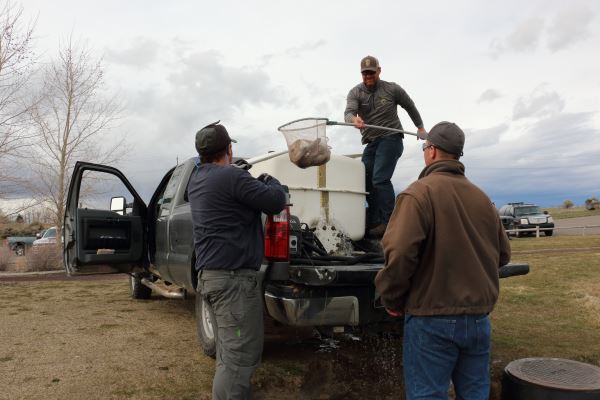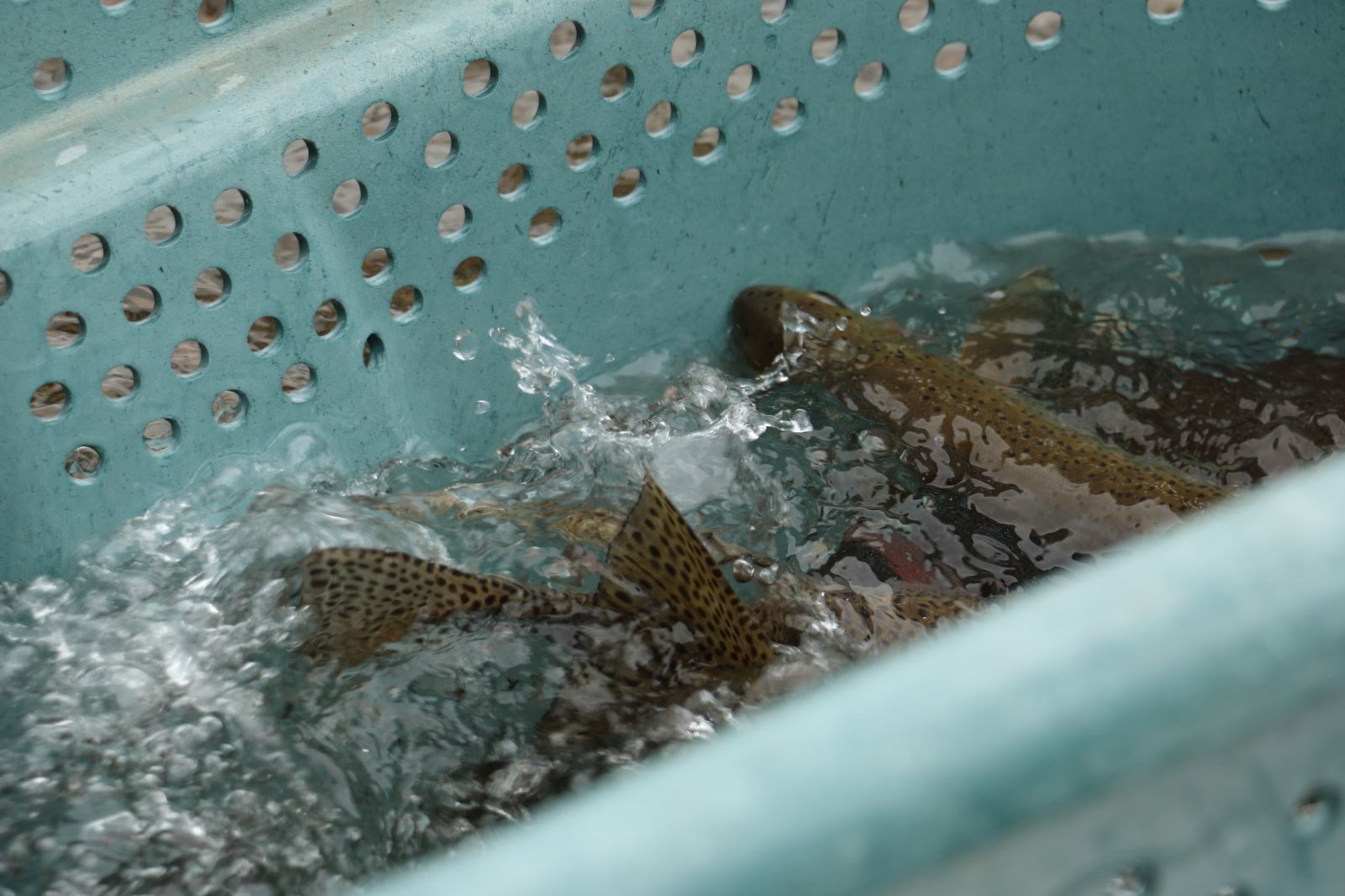The corridor smells of gasoline. It invades noses like the sound of the rumbling generator invades ears. The loud motor electrifies probes dangling in the river off the front of a jet boat. The three men onboard aren’t fishing, but they’re certainly catching.
“During spawning season, rainbows congregate in shallow water,” says Patrick Kennedy, Idaho Department of Fish and Game fisheries biologist. “So our catch rates should be higher.”
Idaho Department of Fish and Game removed 5,857 rainbow trout from the South Fork of the Snake River in May. It’s to help the declining population of Yellowstone cutthroat trout. The bows, introduced decades ago, have doubled their population since 2002. They’re outnumbering cutthroat and crossbreeding with them. Both types of trout are wild, but only one is native.
 “The South Fork is important for native Yellowstone Cutthroat Trout,” Kennedy says. “It’s a stronghold for them.”
“The South Fork is important for native Yellowstone Cutthroat Trout,” Kennedy says. “It’s a stronghold for them.”
Electricity running through the water shocks fish into belly-up mode for a few seconds. Netters scoop the rainbows and leave the rest to recover. The rest include whitefish, browns and cutthroat. The department wants to keep the native fishery off endangered species radar so there’s no bag limit on rainbows and some are also worth money. Physically removing thousands of trout is the newest tactic in the department’s efforts. It’s an aggressive move many anglers agree with, but not unanimously.
“The line of reasoning is tough for me,” says Jeff Olsen, angler. “I was never on board with data that said the cutthroat population was in danger of decline or disappearing. This system of removing, I just don’t believe in it.”
All rainbows removed are scanned for money tags worth $50 to $1,000. Tagged fish go back in the South Fork. Tagless fish go to nearby ponds including Becker Pond in Idaho Falls, five minutes from Jimmy’s All Seasons Angler. Shop owner Jimmy Gabettas keeps South Fork rainbows, but some of his customers don’t.
“People recognize they need to do their part and rainbows need to be controlled,” Gabettas says. “But there are still people who are going to let them go because they like rainbows.”
Many anglers say the vigorous fight of a rainbow makes more memories than the slow jerk of a cutthroat, but beyond memories there’s the money factor. The lure of recreational dollars sinks if one of Idaho’s prominent trout fisheries tanks. That’s what the department is trying to avoid regardless of angler sentiment.
“Anglers really like rainbow trout,” Kennedy says. “It’s hard to see them go. It’s hard to remove them, kill them and eat them. I can understand where that could be a concern, but I think the threat still exists to the native species.”
Removing nearly 6,000 rainbows in a system that has more than 6,000 fish per mile, took six weeks and cost $7,000. The department plans to remove rainbows again in spring 2020.
